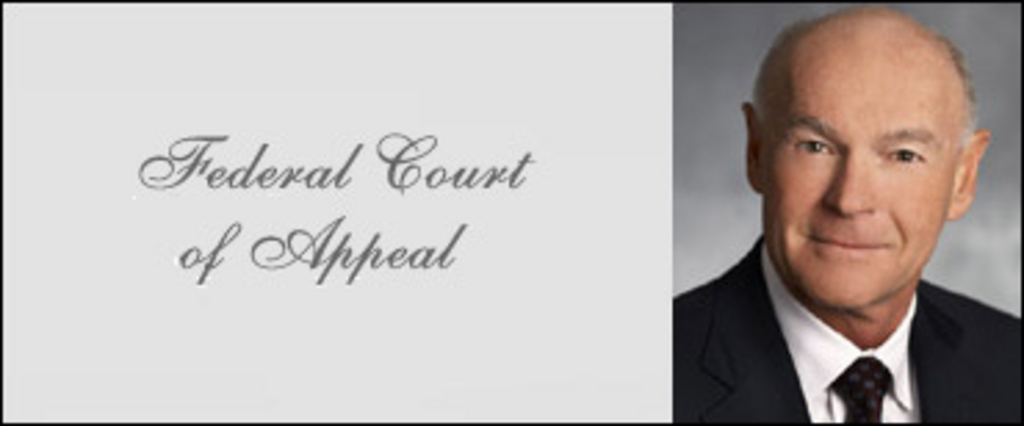In a landmark ruling that will be welcome news to the Canadian harness racing industry, lawyer and horse owner John Craig has won his appeal to the Federal Court to deduct more than the $8,750 currently allowed under the much-maligned Section 31 of
Canada's Income Tax Act.
The Minister of National Revenue had appealed the Tax Court of Canada's ruling in favour of Craig, claiming that (a) the lower court judge applied the wrong legal tests in determining whether his farm income could be combined with his legal income and (b) if he did not apply the wrong tests, the tests were not correctly applied to the facts.
Much to the delight of the standardbred industry, the Federal Court did not agree. In the ruling (click here to view the PDF), Justice John A. Evans stated that he was "not persuaded that the Judge made any error of law in applying the somewhat more flexible and generous test in Gunn for determining the circumstances in which section 31 permits farming and non-farming income to be combined so that farming is a taxpayer’s chief source of income."
"This should level the playing field from a tax perspective for those in the horse racing business or those considering investing in the business," Craig told Trot Insider.
Equine law expert Catherine Willson of Willson Lewis LLP provided the following synopsis of the ruling exclusively to Standardbred Canada.
 Good News for the Standardbred Industry: The Appellant decision of R. v. Craig (Federal Court of Appeal, January 21, 2011)
Good News for the Standardbred Industry: The Appellant decision of R. v. Craig (Federal Court of Appeal, January 21, 2011)By Catherine Willson, Willson Lewis LLP
Catherine E. Willson is a partner in the law firm Willson Lewis LLP, (www.willsonlewis.com) in Toronto, Ontario with experienced counsel practising in civil litigation, employment, construction, family, tax, and equine law.
John Craig is a lawyer in Toronto whose primary income is from his law practice. Mr. Craig is also an enthusiastic standardbred owner with a business comprised of the buying, selling, breeding, and racing of standardbred horses. Mr. Craig deducted losses from that standardbred business in the taxation years 2000 and 2001 against his income generated as a lawyer. The Minister of National Revenue (“Minister”) restricted the losses deducted by Mr. Craig to $8,750 for each year relying on Section 31(1) of the Income Tax Act, R.S.C. 1985, c. 1 (5th Supp.), which maintains as follows:
31. (1) Where a taxpayer’s chief source of income for a taxation year is neither farming nor a combination of farming and some other source of income, for the purposes of sections 3 and 111 the taxpayer’s loss, if any, for the year from all farming businesses carried on by the taxpayer shall be deemed to be the total of
(a) the lesser of
(i) the amount by which the total of the taxpayer’s losses for the year, determined without reference to this section and before making any deduction under section 37 or 37.1, from all farming businesses carried on by the taxpayer exceeds the total of the taxpayer’s incomes for the year, so determined from all such businesses, and
(ii) $2,500 plus the lesser of
(A) 1/2 of the amount by which the amount determined under subparagraph 31(1)(a)(i) exceeds $2,500, and
(B) $6,250, and
(b) the amount, if any, by which
(i) the amount that would be determined under subparagraph 31(1)(a)(i) if it were read as though the words “and before making any deduction under section 37 or 37.1” were deleted,
exceeds
(ii) the amount determined under subparagraph 31(1)(a)(i).
It was agreed that Mr. Craig’s horse activities constitute “farming” for the purpose of section 31 and was a business and a source of income for tax purposes. It was also clear that the horse business was a much smaller source of income than his law practice. Because of this fact, the Minister argued that Mr. Craig was caught by Section 31.
The Minister relied on the seminal decision of the Supreme Court of Canada in Moldowan v. Canada, (1978) 1 S.C.R. 480 (“Moldowan”) which held that a taxpayer could only escape from the restrictive tax treatment in section 31 if the taxpayer’s chief source of income was a combination of farming income and some other subordinate source of income. Under this interpretation, Mr. Craig clearly would be caught by Section 31.
Moldowan, decided in 1978, has been criticized by later Courts. Moldowan was attempting to make sense of the apparent nonsensical provision in Section 31(1) that states, “Where a taxpayer’s chief source of income for a taxation year is neither farming nor a combination of farming and some other source of income”, the taxpayer’s farming losses would be caught by section 31. On its face, this would mean that the limitation of section 31 would never apply and in every case, the taxpayer could deduct the full amount of farming losses. Clearly, this was not the intent of the legislature.
In Moldowan, the Supreme Court decided to insert (read in) a word into this phrase in an effort to understand it. The Supreme Court inserted the word ‘subordinate’ so that it now read “Where a taxpayer’s chief source of income for a taxation year is neither farming nor a combination of farming and some other subordinate source of income”, the horse business would be caught by the restrictions in section 31.
This interpretation of section 31 by the Supreme Court created its own problems and for the last 40 years, farmers and horse industry members have been hit by section 31 restrictive loss deduction limits at times when they can least afford it. It has meant the loss of many a farm and business. If a horse business did not generate more income, or at least a similar amount of income, as the taxpayer’s other businesses, the horse business was unable to escape from section 31. This interpretation has hamstrung our industry, discouraged investment and penalized taxpayers for choosing this industry when they could enjoy full tax deduction of business losses from any other industry in Canada against their more profitable incomes.
In 2006, Gunn v. Canada, 2006 FCA 281, [2007] 3 F.C.R. 57 (Gunn) moved away from the Moldowan interpretation of section 31 and stated that a taxpayer’s chief source of income for a taxation year could be a combination of income from farming and some other source of income even if the income from the farm operation was less than the income from the other business. In other words, Gunn removed the word “subordinate” inserted by the Supreme Court of Canada in Moldowan. As such, it no longer mattered whether or not the farm operation had the larger income. Gunn looked at the amount of income generated as one of several factors to determine the application of section 31 such as the amount of capital invested in the business, the time spent, the taxpayer’s ordinary mode of living, farming history, and future intentions and expectations. These other factors were always considered in previous cases but their importance had been trumped by the income issue.
The Craig decision has taken Gunn and applied it squarely to a standardbred horse business. The Tax Court allowed Mr. Craig to avoid Section 31 by combining farming and non-farming income even when the farming income was much less than the income generated by the law practice. The Court considered other factors to indicate the importance of Mr. Craig’s horse business as a chief source of income, including the time spent, capital invested, and the prominence of this business in the taxpayer’s every day activities. The Tax Court also affirmed Gunn’s rejection of a city slicker/country farmer distinction when applying section 31 – all taxpayers are held to the same standard whether or not a taxpayer shovels poop or hires someone else to do it.
The Federal Court of Appeal upheld the Tax Court’s decision in Craig. This now opens the door for all standardbred industry members to claim full deduction of losses from their horse businesses against other income even where that other income is substantially greater than the horse business. This eliminates a huge hurdle for the industry that has held back investment for over 40 years.
All is not well yet. Section 31 still exists and is a significant impediment to the standardbred industry and all farming industries. Nevertheless, this is a significant step forward and industry members should be encouraged to take this decision to their accountants and lawyers and consider filing as a full-time farm with no restriction on deduction of losses in their 2010 tax returns.
Comment: Section 31 was created in the early 1950’s. I believe the original intent of the Legislature was to provide hobby farmers (gentleman farmers) with an incentive to continue with their work. Section 31 was created to permit hobby farmers, who are not operating a business, to deduct losses from the farming operation against their business income. This was to encourage the hobby or gentleman farmer to continue in the production of arable land and other benefits resulting from farming; the encouragement being in the way of a limited tax deduction, the first of its kind in Canada. This is what I believe was the Legislature’s intent and it is the only way to read Section 31 that makes sense.
Unfortunately, since Moldowan, the Legislature has changed section 31, probably on the basis of or in reliance on Moldowan and the original interpretation of that statutory provision has been lost with these amendments. Therefore, we must rely on cases like Gunn and Craig.
Catherine Willson is a partner at Willson Lewis LLP in Toronto (www.willsonlewis.com). This information deals with complex matters and may not apply to particular facts and circumstances. The information reflects laws and practices that are subject to change. For these reasons, this information should not be relied on as a substitute for specialized professional advice in connection with any particular matter.
(a standardbredcanada.ca website exclusive)


 Good News for the Standardbred Industry: The Appellant decision of R. v. Craig (Federal Court of Appeal, January 21, 2011)
Good News for the Standardbred Industry: The Appellant decision of R. v. Craig (Federal Court of Appeal, January 21, 2011)
